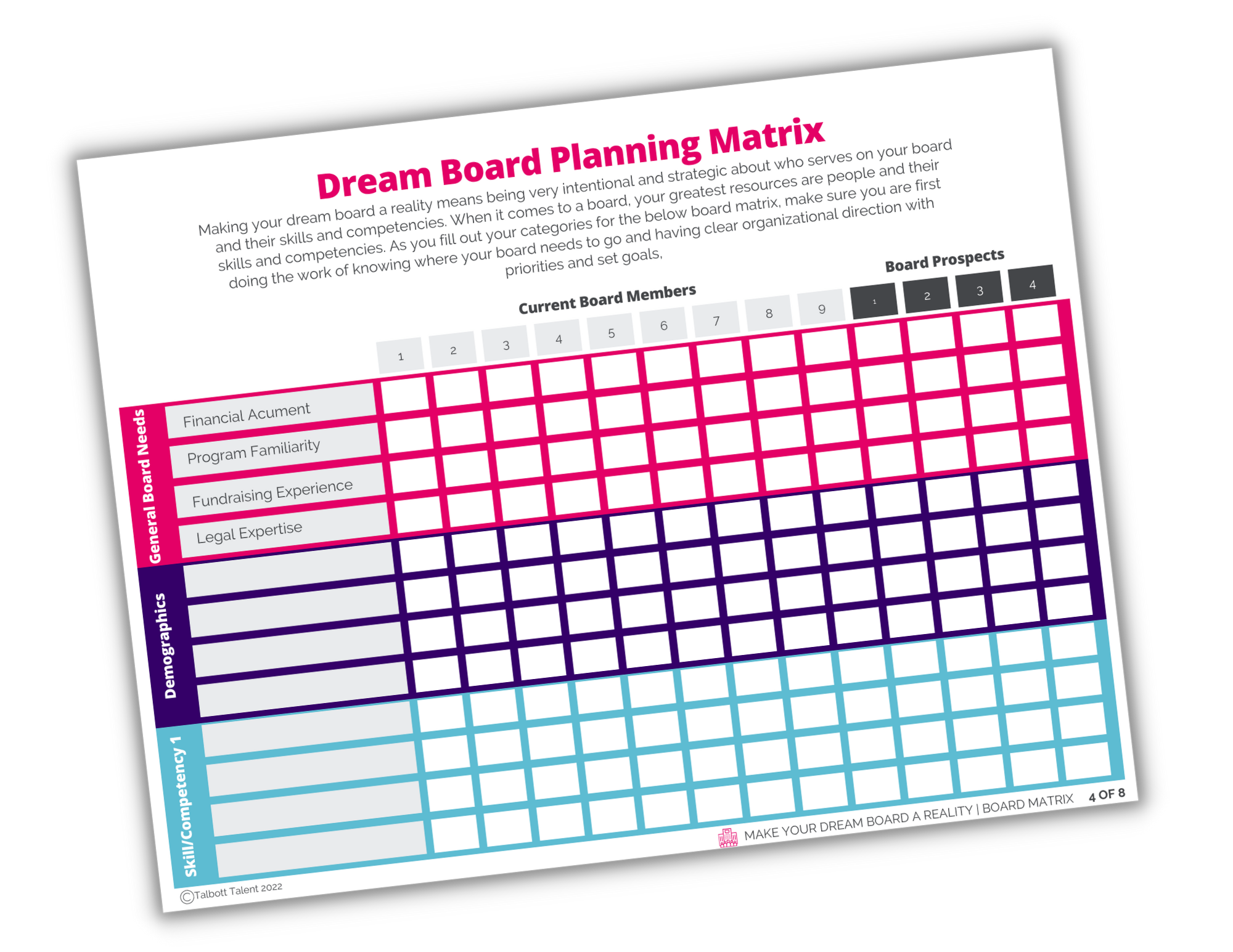Board Matrix: The #1 Tool to Build Your Nonprofit’s Dream Board
I’ve spent my career working for and with associations and nonprofit organizations all over the world. Whether the organization was a small, social service nonprofit operating entirely with volunteers, a professional organization with a $20 million operating budget and layers of governance, or a network of regional chamber of commerces in West Africa, one thing was always the same - the success and future of the organization was dependent on the organization’s leadership.
That’s just one of the many reasons that, during my work with Talbott Talent - where I focus on nonprofit effectiveness - I stress to all nonprofits the importance of institutionalizing best practices in board governance. But, even with great board governance practices in place, I see so many organizations struggle because they don’t have the right people seated at the table - they haven’t built an effective board.
In this article I will share with you one tool that not only helps you build an effective board for your nonprofit - it will help you build your dream board!
What is a dream board?
A dream board will look different for each nonprofit organization, but to us, a dream board not only fulfills its core duties and operates using effective board governance (working with you, not against you); they are your organization's ideal advocate and entity casting your vision and working to achieve it.
A dream board is comprised of individuals whose…
skills and talents
competencies
experience
collectively meet the leadership needs of the organization as a whole.
What is a board matrix?
A board matrix is a simple but effective tool that provides a complete picture of your current board and reveals gaps in leadership that can guide the recruitment of future board members to fill those needs. Think of a board matrix as your board recruitment framework and guide! Establishing a dream board involves taking a strategic, intentional approach to whom you bring onto your board.
A board matrix charts the essential skills, talents, competencies, and experience that a nonprofit needs in its collective board of directors and identifies which individuals currently on your board contribute those essential qualities.
How can a board matrix help you create your dream board?
When recruiting new volunteer leaders to join a dream board, prospects should be evaluated and considered based on the needs of the organization - the gaps in essential qualities not sufficiently represented on your current board. A dream board is greater than the sum of its parts, and creating a dream board requires identifying leaders that contribute to making the collective whole.
A board matrix will help you build a well-rounded, fully-functional board of directors - or possibly even your DREAM BOARD!
There are so many board matrixes out there. What makes one better than the other?
At Talbott Talent, we are focused exclusively on transforming nonprofits through their people. This starts with having a board that works strategically to help you set the vision for your organization and guide you to achieve your mission.
Our board matrix helps you understand the strengths within your organization's current board makeup and identify any gaps in skills, talents, competencies, and experience that can be filled by future leaders. As a tool, a completed board matrix provides direction for what qualities your organization should prioritize when recruiting new board members.
In order to do this effectively, your dream board must exhibit the skills, talents, competencies, and experience needed that are SPECIFIC to your organization. Our Talbott Talent Dream Board Planning Matrix is different than other versions of a board matrix floating around out there because it gives you the space (literally) to determine the skills, talents, competencies, and experience needed to be the board you want and need to be.








